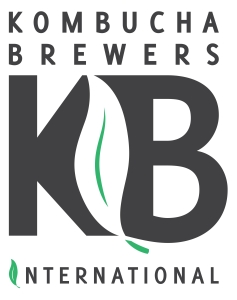Kombucha is a complex, living product with an enormous range of styles and flavors that delight the senses and enliven the body. Mixed with juice, spices or brewed with other beverages; it is most often consumed raw but can also be filtered, force carbonated or in some cases pasteurized; and it can be fermented with a variety of substrates yielding new and exotic combinations. This amazing diversity of expression is part of the mystique of kombucha but also presents difficulty when testing for ethanol due to its inherent biodiversity and complexity, as well as the wide spectrum of serving possibilities.
Kombucha companies currently rely on individual labs to test for ethanol. The KBI Special Projects Team (sub-committee of LGO) contacted over a dozen labs with experience working with kombucha and discovered that each lab has its own method for testing for ethanol. Three main methods are being utilized for testing ethanol in kombucha – alcolyzer (refraction), densitometry and gas chromatography. Moreover, each lab will apply their own tweaks and adjustments to the process in order to account for kombucha’s unique characteristics. The inconsistency in methodology is concerning because kombucha has so many quirks that need to be accounted for and numerous decisions in the testing process can have a significant effect on the final result. With so many changing the methods ever so slightly, it is little wonder that consistent results are simply not achievable.
Oftentimes, the sample is simply run through a beer alcolyzer system designed to effortlessly detect the much higher, and therefore easier to measure, levels of ethanol. Kombucha, being far more complex than beer, contains organic acids, fermented sugars, and live culture strands that are simply not present in most commercial beers. Moreover, the unique kombucha culture is a symbiosis and the bacteria consume the ethanol created by the yeast into organic acids that may have a similar density to ethanol thereby creating false positives.
Just a handful of labs are currently using more sophisticated techniques, like headspace gas chromatography to suss out the nuances. This method shows a lot of promise as it opts to use far lower detection limits than is recommended in the AOAC method for testing beer, consistent with the lower levels of ethanol observed in kombucha. Another difference in sample handling is to not centrifuge it to avoid adulterating the analyte.
Still others utilize AOAC 983.13 method for testing wine that relies on centrifuging the kombucha sample to remove the high levels of sediment present in kombucha and then later factors in the removed sediment into the final mass percentage. This method shows similar results to the modified 984.14 method, and shows promise when adjusted for kombucha’s low detection levels. What is abundantly clear, however, is that there is no consensus available for the appropriate method to use when testing kombucha.
In one lab, the same bottle of kombucha was tested using the beer alcolyzer and a modified AOAC 984.14 method for testing beer. The beer alcolyzer system claimed that the kombucha contained levels of ethanol higher than 0.5%, the level above which a beverage must be marketed as alcoholic. When analyzed using the modified AOAC method, a gas chromatography method, the kombucha was tested to be well under 0.5% ethanol. Because the limit for alcohol content in non-alcoholic kombucha is so low at 0.5%, it is imperative that the testing is done accurately and precisely. When an unmarked bottle of Bud Light was tested, both the beer alcolyzer system and the gas chromatography method were highly precise, possibly because its higher alcohol content is easier to detect with higher detection limits.
The lack of consistency is evident even at the same lab. The same samples were sent with different labels to a lab and the test results for the exact same samples had a variance of +/- 1% ABV – that’s more than double the legal limit! So, how do we all get on the same page and find an accurate, repeatable, consistent test for ethanol in kombucha? Collaboration, of course! We are symbiotic after all.
The kombucha industry is reaching out to collaborate with the most educated body of scientists to establish a new testing standard for ethanol in kombucha. By partnering with AOAC, KBI participates in an ethical, scientific process for creating testing methods. Moreover, the TTB, FDA and other government, non-profit, academic and others will work together and decide through consensus on the appropriate method for accurate, consistent and repeatable results. The lack of definitive research in this field has frustrated kombucha brewers who are taking measures to brew compliant products and regulatory agencies. Working with industry experts, KBI hopes to reach a universal truth for testing kombucha to better serve and inform consumers.


